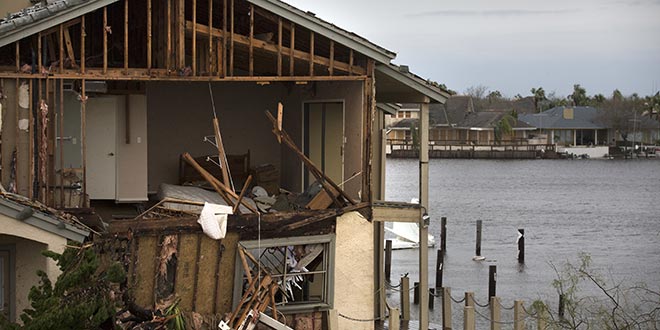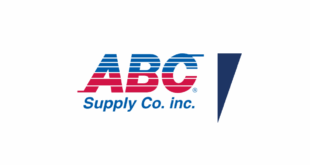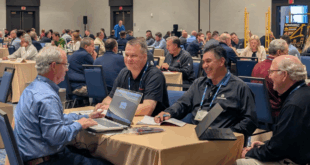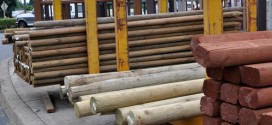
Scott Reynolds, president and CEO of Member Insurance, recently answered questions from Hardware Retailing about preparing for and recovering from catastrophic storms, such as the recent hurricanes and related flooding. Member Insurance is the largest provider of insurance to independent hardware stores in the U.S. For more information, visit memberinsurance.com.
Hardware Retailing (HR): What should retailers know about flood insurance?
Scott Reynolds (SR): Flood is covered by the federal government, and there are specific rates and coverages available to all.
The flood exposure in this country is currently the most problematic. The National Flood Insurance Program (NFIP) is the federal program to cover losses due to flood for residential buildings and property and commercial buildings and property. The program has been in existence for many years, but it has not been healthy for many years. And it has, in fact, been in debt due to underutilization and underpricing.
The actuarial rates charged for flood coverage under the NFIP are not sufficient, and it’s created a debt of about $25 billion. Our concern is not only with the health of the National Flood Insurance Program, which after hurricanes Harvey, Irma and even to some extent, Maria, will just throw the NFIP into greater debt.
But our concerns also have to do with awareness. Floods don’t just happen due to hurricanes. They also happen in all parts of the country. People like to think that if they’re not in what’s considered to be a high-risk flood zone, then they do not need flood insurance. The fact is that everybody is in a flood zone. There’s a far greater likelihood of a flood than there is of a fire, and everybody buys fire insurance, but only a small portion buy flood insurance. And flood insurance is much less expensive.
A flood loss can be a damaging loss—perhaps a total loss—to the property, and that can be crippling if it’s not covered by insurance.
I would look at it like this. If I own a store, I would look at the total value of my building and my contents and I would think to myself, what happens if I have a total loss once every century? So, divide my property value by 100, and ask myself, am I willing to pay this much money to be covered for that loss? Because the fact is, that the industry charges far less than even that. In today’s environment, buying both wind and flood, and, in fact, insurance for your fire, too, is still a bargain for the buyer.
Nobody should assume that they are not exposed to flood. Floods happen everywhere and most people could probably look through the archives of their local newspaper and find a significant flood event that occurred in their community in the past 50 years. Floods do happen, and they happen everywhere. Just because you’re located in a higher elevation in the middle of the United States does not mean that you’re unexposed to flood.
HR: Why are business owners more likely to buy fire insurance than flood insurance?
SR: I think a business owner is more likely to relate to a fire loss because it’s so damaging and it hits the news. It can start from something that affects their business only, and their business may make the headlines.
Floods aren’t nearly as headline-driven. It’s really wise to buy the insurance. It protects your company or your home from a potentially financially devastating loss.
We’ve seen where a store will have a flood loss, not have flood insurance and that’s the end of the store. They can’t do business anymore. Uninsured losses can be absolutely devastating.
I think people are more inclined to buy wind coverage than they are flood insurance. But wind coverage is a bit more expensive because it’s offered through private insurers and they are able to charge actuarially sound rates.
HR: What advice do you have for business owners before and after a catastrophic storm?
SR: My advice to store owners throughout the country, and especially in the areas exposed to hurricanes, is to ensure that they’re adequately covered for not just fire, but for wind and flood.
They should also take measures to mitigate their own losses by making sure their roofs are updated and repairs are made. If they have any building characteristics that don’t meet the current code, then they should weigh the benefits of bringing their buildings up to code.
In the event of a claim, they need to take lots and lots of pictures. Pictures make handling a claim so much easier for the insured, the insurance company and the NFIP.
If they don’t have adequate insurance coverage, then act fast with as many mitigating measures as they possibly can. They should review their policies with their agent carefully to determine if there is any available coverage and make sure that any salvageable inventory is preserved so they can realize the value of it. Hopefully they’ll be able to put something together where they can start again. This is only a last resort. The best option, of course, is to get insurance so you’re never in that situation.
HR: How can retailers be sure they’re adequately insured for wind and flood?
SR: They need to know what it’s going to take to rebuild. If their building was recently constructed, they’re going to know their replacement cost with a great deal of precision. If the building is an older building, it’s a good idea to have it appraised. Ultimately, they should be comfortable that, if there’s a total loss of the building, their coverage will allow them to rebuild.
The same thing is true for the contents. It’s a very good idea to have a detailed inventory on hand at all times and have that inventory backed up and off-site so it can be accessed readily. An inventory list, in conjunction with photos after the loss, will make handling the claim so much easier for the insured and the insurance company for a fair outcome. That’s definitely true for both private and public insurance.
HR: How can retailers keep their insurance costs affordable?
SR: The characteristics of the building are going to affect the rate. Things such as newer buildings, superior construction and whether community participates in the NFIP will affect rates. By community participation, I mean that a community has decided to map where the flood zones are and where they are not. It also will establish the rates for the buildings that are in the flood zone in that community.
HR: What else can they do to keep rates affordable?
SR: On flood, the rates will not vary from carrier to carrier. But on the wind exposure, the rates will vary. It’s a good idea for them to ask their insurance agent to get options for them. They should make sure to share the characteristics of their building with that agent, because, ultimately, that agent is going to have to present the exposure to an underwriter at an insurance carrier to price their risk for a wind loss. The more information that underwriters have, generally, the better they can rate.
HR: Do you think everyone should insure for wind loss?
SR: Yes. If you’re in an area near the coast, your insurance for wind can get quite high and it can sometimes appear to be cost prohibitive, but you have to weigh that against the result of having an actual devastating loss, such as what occurred in Florida this year with Irma. An uncovered loss and a devastating event like a flood or a hurricane can bring a business to its knees.
 Hardware Retailing The Industry's Source for Insights and Information
Hardware Retailing The Industry's Source for Insights and Information








